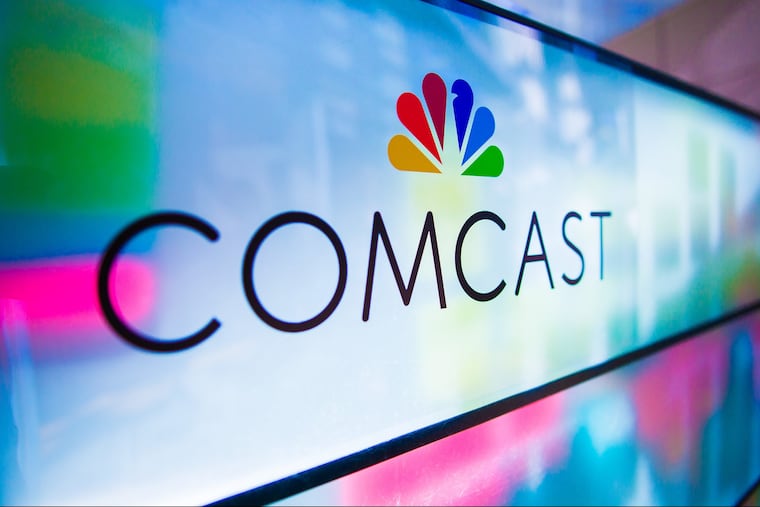Comcast bills will rise 3.3 percent, but check your fees. That’s where the hikes hit hardest.
Comcast's promotional prices don't increase over the terms of a subscriber's contract, but the fees do. And those fees are driving up the overall bill.

Xfinity customers face a 3.3 percent higher bill starting in December or January as Comcast Corp. boosts fees for broadcast television networks, regional sports channels, adapters for additional cable-connected televisions, and internet modems.
The nation's largest cable-TV company has been disclosing new rate cards for 2019 with customer bills this month. And Comcast's price disclosures in suburban Philadelphia — with 36 footnotes — contain new names for bundles of TV and internet phone services that make it hard for subscribers to compare prices.
But here's a key point: The promotional prices don't increase over the terms of a subscriber's contract, but the fees do. And those fees are driving up the overall bill.
Fees for broadcast television will rise 10 percent to $8.25 a month. Regional sports fees are going up 7 percent to $8.25. Adapters for additional televisions in the home will increase 17 percent to $6.99. And internet modem rentals will go up 18 percent to $13, according to a rate card distributed to customers in Montgomery and Bucks County but are reflective of the company's broader pricing policies.
Comcast spokesperson Jennifer Bilotta said in a statement that "while we try to hold costs down, price changes are necessary for a number of reasons, including the continually increasing costs associated with carrying the programming our customers demand, especially broadcast television and sports programming, which are the largest drivers of price increases."
Comcast does not say what the typical customer pays a month, but it told investors in its third-quarter earnings that average revenue per customer was $153.56 a month for internet, cable-television, phone, and other Comcast services.
Consumer advocates have criticized the trend of cable companies hiking fees as opposed to boosting the base bundle, saying that many times subscribers don't know about fees, which can add 25 percent to monthly bills. Comcast makes information available on its prices here.
Earlier this month, Massachusetts Attorney General Maura Healey settled a civil investigation with Comcast over the lack of fee disclosures in its advertising.
Comcast is raising its prices as streamers, which have fueled the cord-cutting boom, also have raised prices. Both DirecTV and YouTube TV hiked the subscriptions on their streaming services by $5 to $40 a month this year, or 14 percent. These streaming services require a wireless or wired high-speed internet connection.
Even if subscribers in Comcast franchise areas were to drop cable TV, they would still need an internet connection and that is most times provided by Comcast itself. Executives have recently been referring to Comcast as a "broadband company."
"If Comcast faced competition, the last thing they would do is raise prices. But because they don't face competition, the first thing they do is raise prices," said Mark Cooper, economist with the nonprofit Consumer Federation of America. Despite losing some cable-TV customers to such streamers as Netflix, Comcast and other cable operators have a "stranglehold on access to customers," Cooper added.
Bilotta said that Comcast continues "to make investments in our network and technology to give customers more for their money – like faster internet service and better WiFi, more video across viewing screens, better technology like X1 and xFi, and a better customer experience."